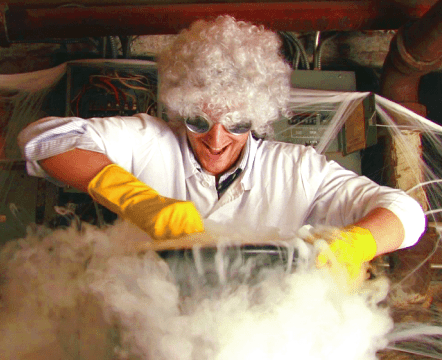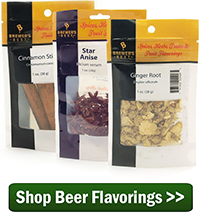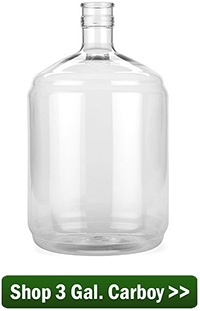 To the chagrin of some, I like to experiment in the kitchen. Rather than follow set recipes or guidelines, I like to let the whimsy of the moment guide me, allowing sauces, herbs, and spices to point me in the direction of a dish, not necessarily knowing if the destination of my journey will end up good or bad.
To the chagrin of some, I like to experiment in the kitchen. Rather than follow set recipes or guidelines, I like to let the whimsy of the moment guide me, allowing sauces, herbs, and spices to point me in the direction of a dish, not necessarily knowing if the destination of my journey will end up good or bad.
It may be an undisciplined way to cook, but it is fun. Occasionally, it also turns out to be the way I want to brew. I like to go off the beaten path and experimenting with homebrew. While it’s important to hone your skills with the basics, what great chef – or brewer – wouldn’t want to venture off the commonly taken path from time to time?
The best part? Experimenting with homebrew is not hard. Here are a few tips for doing your own beer brewing experiments and creating beers that are specific to your unique tastes:
1. Use a Solid Base Recipe
One of the first homebrews I made was a jalapeno blonde ale. I started with an easy extract recipe as a blonde ale base:
7 lbs. Light Malt Extract
1 oz. Cascade hops at :60
1 oz. Willamette hops at :5
Fermentis Beer Yeast: Safale US-05
By starting with a good beer recipe – one I was familiar with – I knew what to expect from the base beer. From there, I wanted to play with getting the right combination of spice and heat from peppers while also imparting some vegetative pepper flavor. It was all trial and error and an opportunity to play. I sliced and gently roasted the peppers, then “dry-peppered” the beer in secondary.
Because I knew what flavor I would get from the base beer, it gave me flexibility to experiment with peppers to adjust the brew to my taste. You can do the same thing using extra ingredients in the secondary fermentation process and pulling tastes from the carboy or bucket to make sure it’s right for you. Try fruits, vegetables, or even herbs and spices when doing a beer brewing experiment!
2. Split Up Batches
When experimenting with homebrew many homebrewers may start with standard six and five-gallon carboys for fermentation, but if you go a step smaller, you can increase the options for experimentation you have with each batch you brew.
For example, if you split a batch and use two three-gallon fermenters instead of one five-gallon carboy, you increase your options to try out different dry-hopping ingredients and even different yeast strains. Why is this beneficial? It can help you hone your beer recipe and figure out what kind of tastes and aromas you like best, getting two different beers from one brew day.
For example, if you take the same base-level recipe for the blonde ale above, but use a different yeast option, you’ll get a beer with completely different flavors than with Safale US-05. Use a Belgian Wheat 3942, and you’ll end up wit h fruity characteristics. Or maybe go a little more out there and try Weihenstephen Weizen 3068 and see if banana and clove flavors shows up in your final product. This is a great way to quickly increase your knowledge of different ingredients by expanding your beer brewing experiments.
h fruity characteristics. Or maybe go a little more out there and try Weihenstephen Weizen 3068 and see if banana and clove flavors shows up in your final product. This is a great way to quickly increase your knowledge of different ingredients by expanding your beer brewing experiments.
3. Tailor to Your Tastes
An important thing to remember when experimenting with homebrew is that you’re simply making beer for you to enjoy. Don’t be afraid to work from tastes or smells you like.
I love watermelon, so a couple years ago I made a watermelon wheat beer by hand-squeezing juice from watermelons sanitized with Star-San and added the juice to the secondary fermentation of an American wheat ale.
My wife loves apples and hard cider, so I’ve also tried combining apples with homebrewing. I started with a pretty simple base beer:
3.3 lbs. Light Malt Extract
1 lb. honey malt
2 oz. Cluster hops at :60
But, instead of topping off the wort with water, I used apple juice. I fermented with Wyeast 1056 for a clean yeast flavor and with some patience, ended up with a “beer” that smelled like a cider, but had a unique sweet and bitter taste combination thanks to the cider and hops.
When homebrewing, it’s important to remember that it’s OK to play around. Many chefs only become great once they move beyond their comfort zones. By experimenting with homebrew based on what you love and by thinking outside the box, you’ll find more ways to enjoy the hobby of homebrewing – and may even stumble on your next favorite beer!
—–
Bryan Roth is a beer nerd and homebrewer living in Durham, North Carolina. You can read his thoughts on beer and the beer industry on his blog, This Is Why I’m Drunk, and send him suggestions on how to get his wife to drink craft beer via Twitter at @bryandroth.
